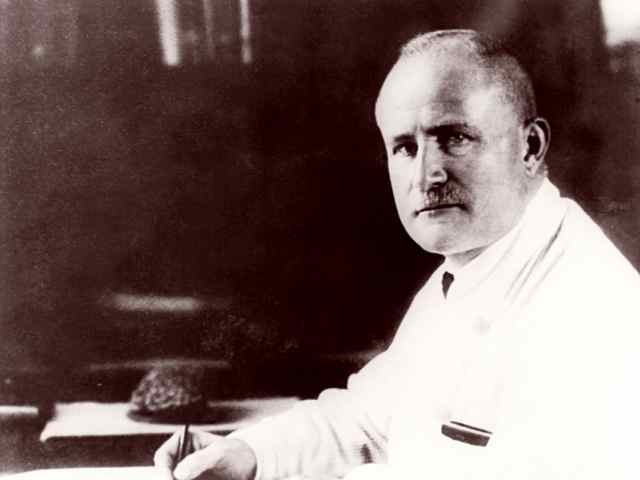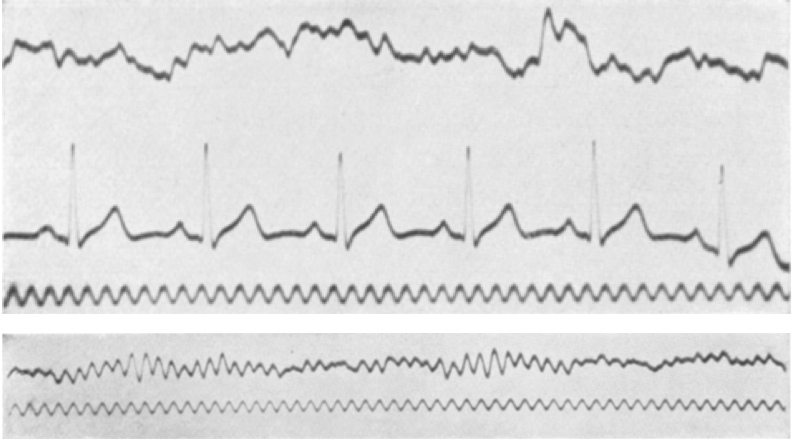First human electroencephalogram (EEG) recorded
From nineteenth-century phrenologists palpating head bumps, through electroencephalography starting in the 1930s, and up to today’s brain scans, the hope of being able to read the mind and the self through brain recordings has not subsided (Borck 2005, Uttal 2003).

Hans Berger
Hans Berger recorded the first human electroencephalograms (EEGs) in 1924. He obtained his medical degree from the University of Jena, Germany, in 1897 and then joined the university psychiatric clinic directed by Otto Binswanger. There he remained until retirement in 1938. Berger succeeded Binswanger as director of the clinic and became Professor of Neurology and Psychiatry at the University of Jena in 1919. In his early work Berger had hoped to discover the physiological basis of psychic phenomena. The results were disappointing and Berger turned to investigating electrical activity of the brain. He characterised the wave patterns including α and β waves and coined the term “electroencephalogram”. Berger’s paper Über das Elektrenkephalogramm des Menschen (On the EEG in humans), published in 1929 in the Archive für Psychiatre und Nervenkrankheiten, was the first of 23 publications on the subject.
In the following video, you can learn more about EEGs and its contributions to neuroscience.
History of EEG
Two key discoveries led up to the construction of the first electroencephalogram. The first being electrical impulses actually being observed for the first time in July 1875 by Richard Caton through the galvanometer, which is a type of electrical ammeter to measure electric current. The second was Ernst von Fleischl-Marxow and his studies on evoked potentials, linking nervous system activity to muscle movements. Hans Berger used these two discoveries as the foundation of what he would soon discover, the electroencephalogram. Using silver foil electrodes, capillary electrometer and galvanometer, Berger was able to capture what was the first recorded Alpha (bottom picture) and Beta (top picture) brain waves.
Continue reading:

History: From EEG to Quantitative EEG (QEEG)
Making Waves – The Past, Present, and Future of EEG Research



































































0 comments
Sign in or create a free account